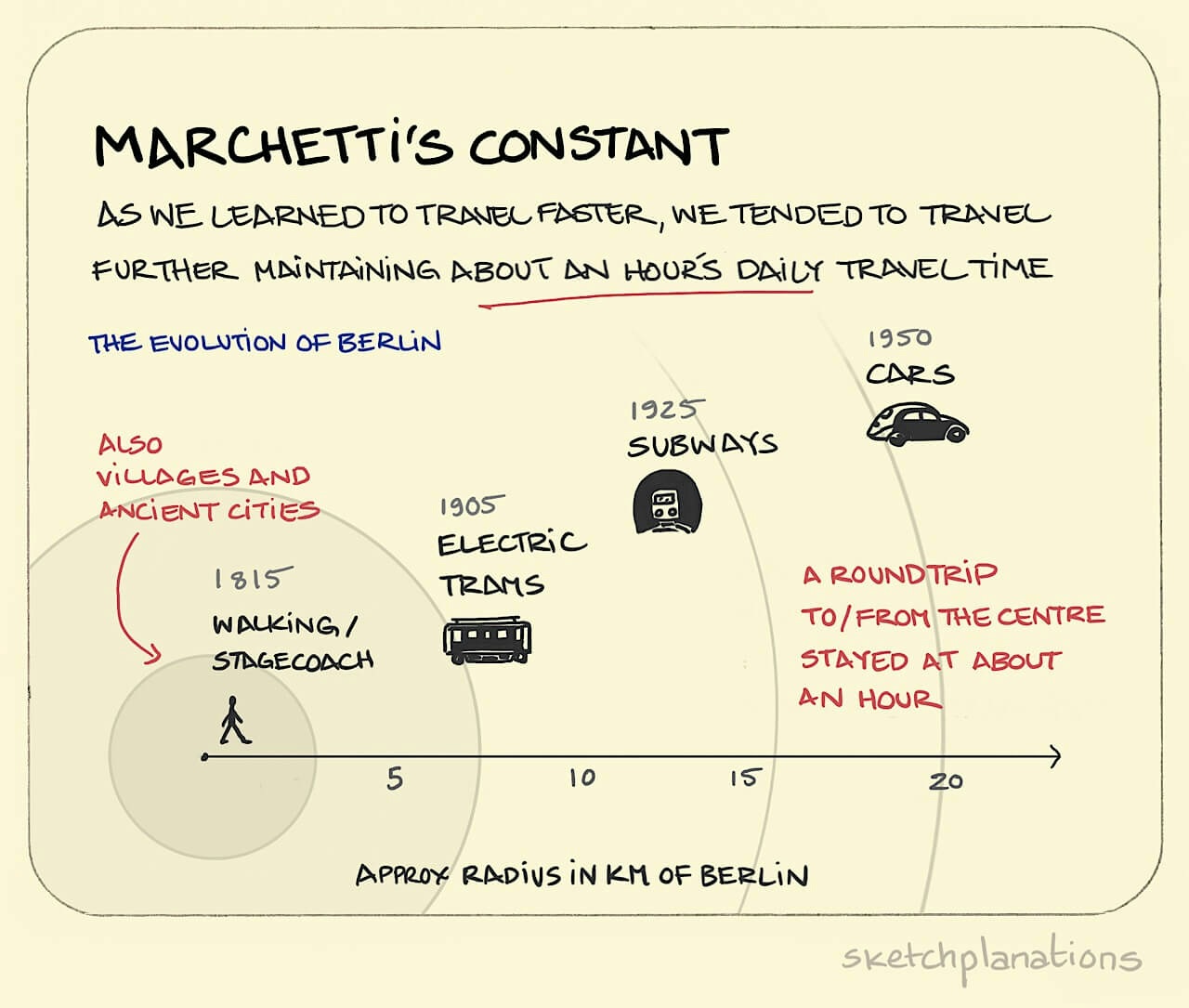Marchetti’s constant

- Listen
- Copied!
👇 Get new sketches each week
Marchetti's constant is the idea that people throughout history have budgeted, on average, about an hour a day for travelling.
Originally observed by Yacov Zahavi, it came from the observation that even as our means of transport sped up, instead of travelling less each day, we would just travel further.
This leads to the conclusion that the size of our cities increases partly according to how efficiently we can travel in and out—they generally increase to a size that maintains about an hour of round-trip travel time.
Cesare Marchetti observed that Greek villages and ancient walking cities, as marked by ancient city walls, tend to share a radius of about 2.5km. Walking at a typical 5km/hr makes a one-hour round-trip journey. He also pointed out that: “Even people in prison for a life sentence, having nothing to do and nowhere to go, walk around for one hour a day, in the open.”
Unfortunately, if you live in London, the average round-trip seems to be an exception of 1h30 .
This is also known as the constant travel time budget hypothesis.
Related Ideas to Marchetti's Constant
Also see:
- Isochrones. It might be interesting to look at these according to the transport method
- Congested equilibrium
- Jevon's Paradox
- Naismith's Rule for estimating travel time in the mountains
- Our senses are built to take in information at human pace
Image adapted from: Marchetti, C., 1994: Anthropological Invariants in Travel Behavior, Technological Forecasting and Social Change , 47 :75–88, Internal Publication, International Institute for Applied Systems Analysis (pdf)

